- drach09's home page
- Posts
- 2022
- 2020
- June (1)
- 2019
- 2018
- 2017
- 2016
- 2015
- 2014
- December (13)
- November (2)
- October (5)
- September (2)
- August (8)
- July (9)
- June (7)
- May (5)
- April (4)
- March (4)
- February (1)
- January (2)
- 2013
- December (2)
- November (8)
- October (5)
- September (12)
- August (5)
- July (2)
- June (3)
- May (4)
- April (8)
- March (10)
- February (9)
- January (11)
- 2012
- 2011
- October (1)
- My blog
- Post new blog entry
- All blogs
2006 EEMC Neutral Pions: First Look at Background-subtraction
Here, I report a first look at AN for EEMC pions with Steve's background-subtraction procedure. Since I utilized slightly different code structures than previous updates, it is useful to compare the full yield asymmetries from the new structures to what I have shown, previously.
Procedural Updates
Since last time, I have adopted Steve's code structures to ensure consistency with the ALL and cross-section analyses. The procedure is to create Monte Carlo templates for the various signal and background contributions. The templates are then fit with functional forms which are carried forward through the background subtraction. I follow Steve's technique, save, that I create and fit the templates separately for the two detector hemispheres and six bins of φS. I then perform the background subtraction for the data binned in hemispheres and φS. The cross-ratios are calculated the same as before.
One difference I note is that the raw yields seem to be reduced by around 10% from the previous procedure. My sense is this is the result of a dropped cut in my initial code. It is especially worthwhile, then, to verify consistency between the total yield asymmetries.
One will also note that several bins of p_T have been dropped from last time. This is largely due to Monte Carlo issues, both with agreement to data as well as Monte Carlo statistics.
Figure 1: Total Yield Asymmetries
| New | Old |
|---|---|
 |
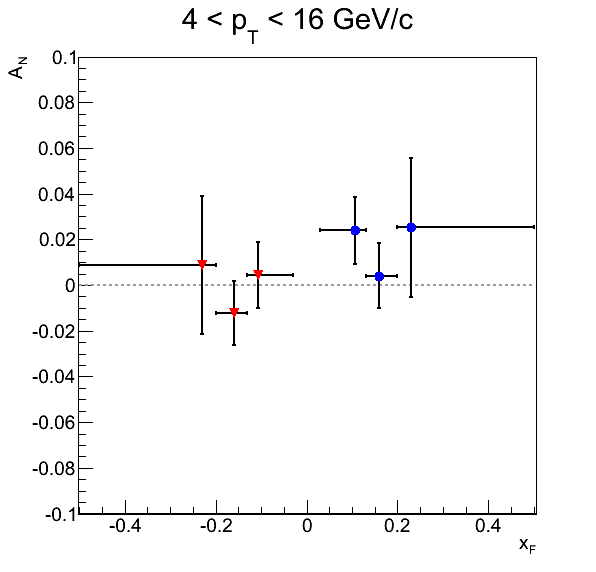 |
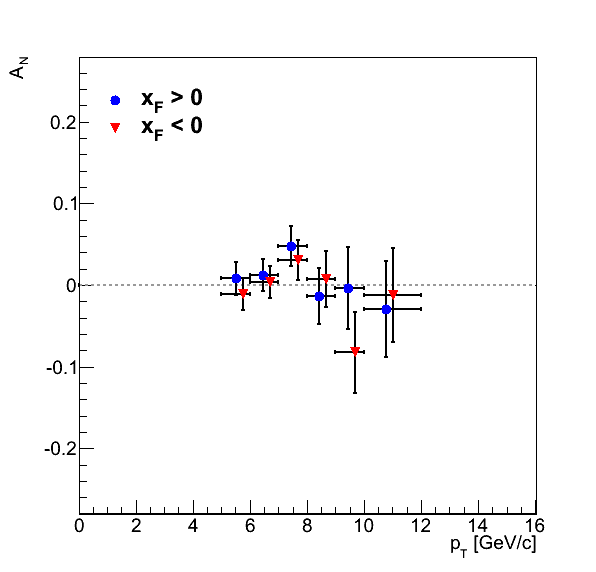 |
 |
Figure 1 shows that between the previous code structure and the current code structure asymmetries from total yields agree within statistical uncertainties. This is a good sanity check before moving forward with the background subtraction.
Figure 2: Total Yield p0's
| New | Old |
|---|---|
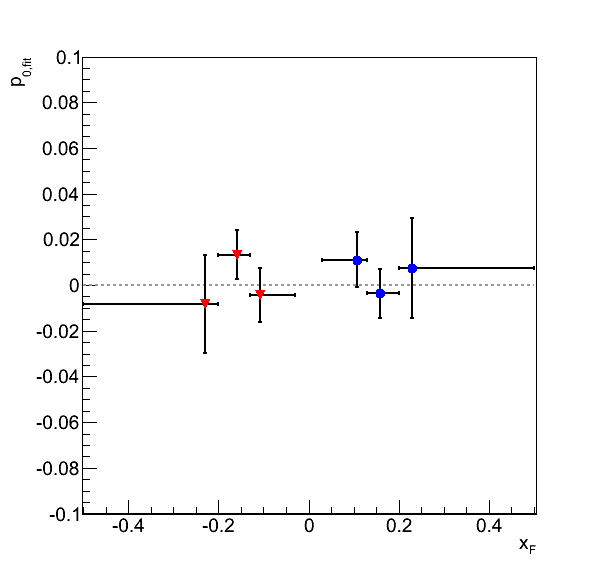 |
 |
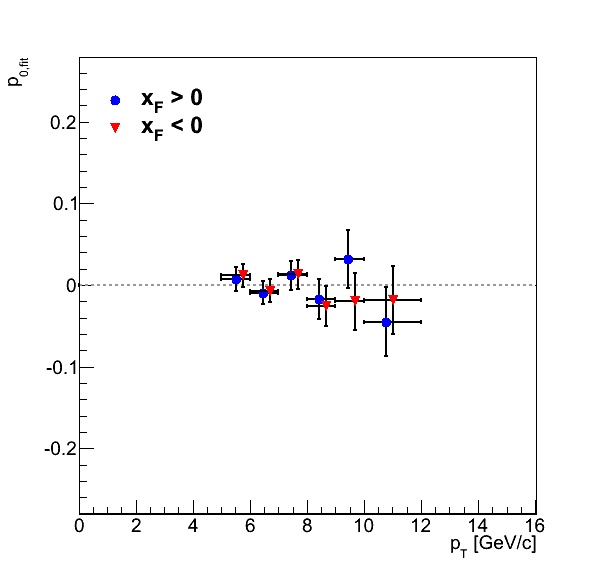 |
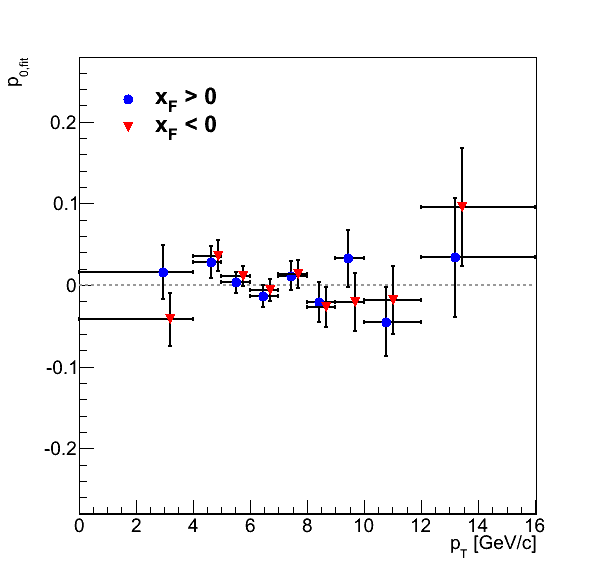 |
Figure 2 shows that between the previous code structure and the current code structure the p0's of asymmetry fits from total yields agree within statistical uncertainties. This is another good sanity check before moving forward with the background subtraction.
Figure 3: Background-subtracted Asymmetries
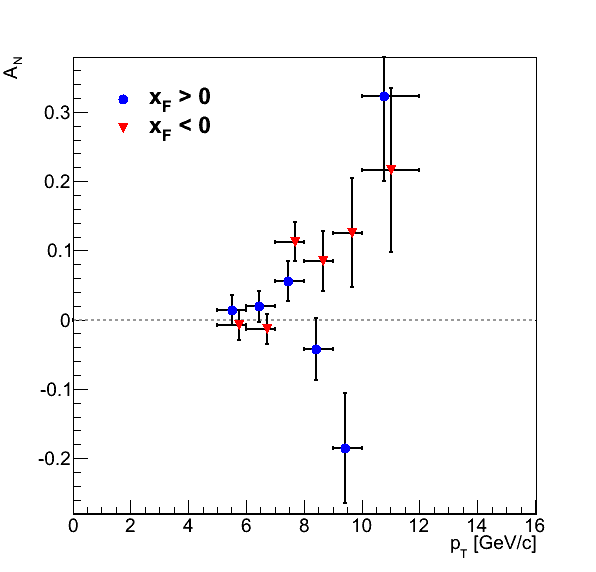 |
 |
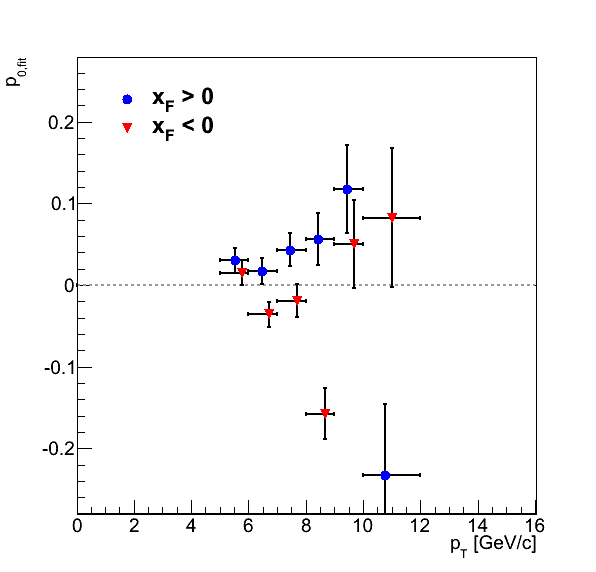 |
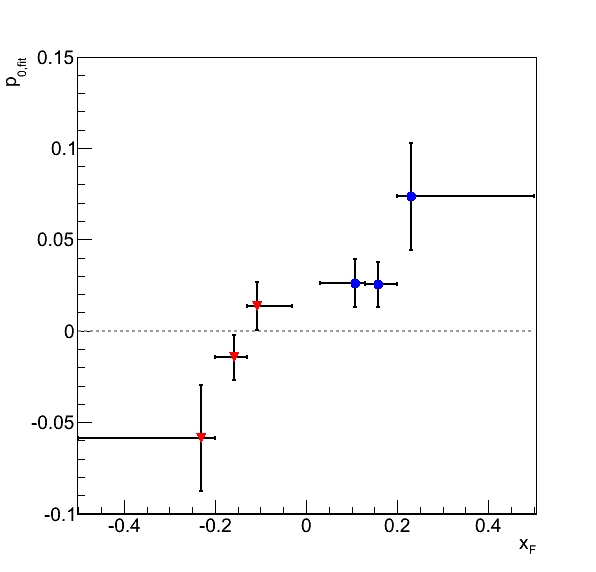 |
Unfortunately, asymmetries calculated using the background-subtracted yields bear little resemblance to the total yield asymmetries. Moreover, the large non-zero asymmetries for xF < 0 as well as sizeable nonzero p0's are quite troublesome. So, it is necessary, at this point, to decipher at which point the story goes awry.
- drach09's blog
- Login or register to post comments
